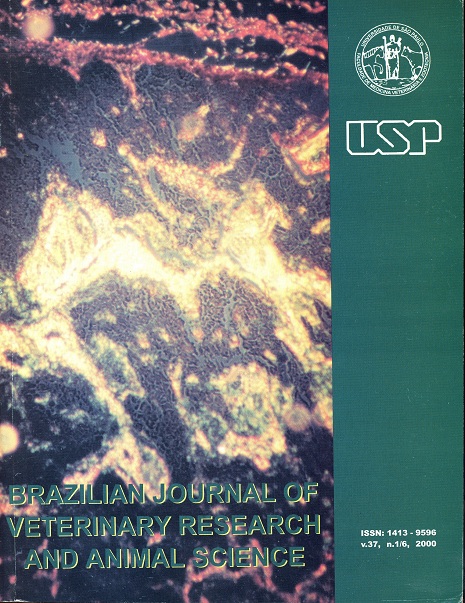Effect of different suture knot placements on functional recover of the flexor digitorum profundus tendon (FDPT) of the toracic member of the dog after experimental tenorrhaphy
DOI:
https://doi.org/10.1590/S1413-95962000000100009Keywords:
Tendons, Suture, DogsAbstract
The aim of this study was to compare the effect of different suture knot placements on recover of function of the flexor digitorum profundus tendon of dogs (FDPT). Twenty adult mongrel dogs, male and female, were used for this study. The animals were separated in three groups of eight, seven and five animals. The second and fifth toes of the FDPT in the left front limb were sharply transected and repaired using the modified Kessler technique. The placement of the suture knot and the suture pattern at the epitendon were changing. In the first group, the suture knot was placed at the volar region of the tendon and in the second group the knot was situated on the dorsal surface. Both groups, one and two had their epitendons sutured using a simple interrupted pattern. In the third group the knot was set inside the endotendon and a simple continuous pattern was used to join the epitendon. The animals received controlled passive motion treatment for seven to 15 days when the suture condition was evaluated. The different groups were compared to evaluate the recovered function by the parameters tendon ruptures, gap formation of tendon ends and complete anatomical apposition. Group three presented the best results regarding the parameters evaluated, with no ruptures and with 2.5% of gap formation of tendon ends. The results indicated that the position of the suture knot in tenorrhaphy of flexor digitorum profundus tendon had influence in both healing and biomechanic response.Downloads
Download data is not yet available.
Downloads
Published
2000-01-01
Issue
Section
VETERINARY MEDICINE
License
The journal content is authorized under the Creative Commons BY-NC-SA license (summary of the license: https://
How to Cite
1.
Moraes JRE de, Hataka A, Paura D, Moraes FR de. Effect of different suture knot placements on functional recover of the flexor digitorum profundus tendon (FDPT) of the toracic member of the dog after experimental tenorrhaphy. Braz. J. Vet. Res. Anim. Sci. [Internet]. 2000 Jan. 1 [cited 2024 Apr. 16];37(1):56-60. Available from: https://revistas.usp.br/bjvras/article/view/5849





